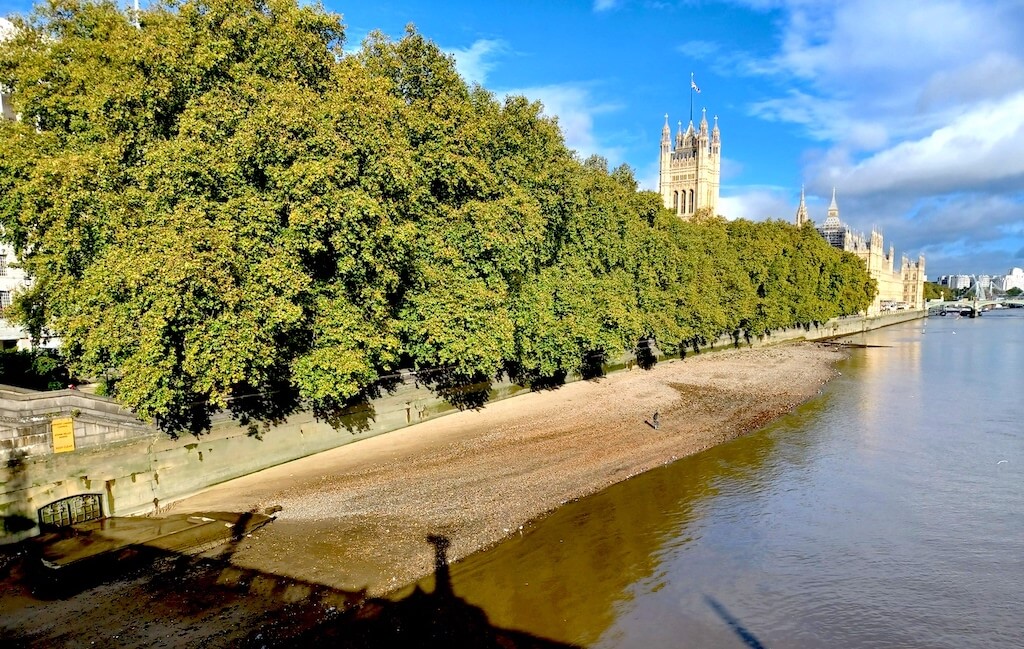Post
Father Thames – the Tides of Change walk reveals rich history of London’s river
23 Jun 2023
Sign up for Father Thames – the Tides of Change on Saturday 29 July
“The Thames was all gold. God it was beautiful, so fine that I began working a frenzy, following the sun and its reflections on the water.” So said Claude Monet, who delighted in the capital’s river as an endless source of inspiration. He was so enraptured that he painted almost 100 impressionist oil paintings of different views of the Thames River between 1899 and 1901 when he stayed in London.
Londoners can be within reach of a river walk on any day of the week. But there is so much more than a gentle stroll along the banks of the Thames. It’s history goes back for thousands of years and today the riverscape is endlessly changing.
Join us at The London Society here
That's what Dr Helen Naylor, Westminster guide loves about her Father Thames walk on Saturday 29 July. Having spent more than 25 years working as a geologist in the energy sector after gaining a PhD in Earth Sciences, expect an experience dripping in facts and fascinating figures.
“I was interested to see what impact the Thames had on London’s history. I cover why London is where it is – from the Roman city to bustling business hub of today. You’ve got 2,000 years of history, and I absolutely love the old stuff.”
Naylor uses many images on her tours to fire people’s imaginations, ranging from views of Roman London which was very green and marshy back then, to frost fairs. It’s hard to image what it was like when the river froze solid, and Naylor explains why on the tour.
Check out our rundown of upcoming events
There’s plenty of entertaining stories including Oliver Cromwell losing his horse and carriage in the river, to the Great Stink of 1858.
The Scientist Michael Faraday didn’t mince his words in a letter to The Times, published in 1855. "Near the bridges the feculence rolled up in clouds so dense that they were visible at the surface, even in water of this kind. ... The smell was very bad, and common to the whole of the water; it was the same as that which now comes up from the gully-holes in the streets; the whole river was for the time a real sewer.”
Naylor shows a picture of Death rowing on the Thames, which is a cartoon from Punch magazine in 1858. “There were cholera outbreaks and tens of thousands of people were dying. The smell was so extreme that members of Parliament had to put up curtains with lime to stop the smell.”
To keep things current, Naylor moves on to the modern day and discusses The Thames Tideway Tunnel – or Super Sewer – as it is also known. This 15-mile, £4 billion concrete tube, which burrows under London, aims to stop an estimated 40 million tonnes of sewage spewing into the Thames. The Super Sewer should be finished in 2025, and hopefully will protect the river for at least the next 100 years.
There are so many things to say about the river, one of the most fascinating, says Naylor, is that “the houses of parliament were deliberately built by Charles Barry who designed looking over the river as a security measure. That was a deliberate decision. So there’s the aspect of the river as a security barrier.”
The walk finishes with a Wordsworth poem at the Covid wall at the Albert Embankment. It seems like so long ago but it is a poignant and emotional reminder of the pandemic. The wall is decorated with more than 150,000 red hearts, each one representing a life lost to Covid-19, a memorial to the biggest peacetime mass trauma event in over one hundred years.
As Naylor says, “London is so multifaceted. Its history is not only long, but everything is interlinked. It's a gift that keeps on giving."
